Heterotopic Ossification (HO) Excision Surgeon

Have you recently experienced a hip trauma or have you had a neurologic injury or hip surgery? If so, you may be at risk for developing heterotopic ossification (HO). HO is an abnormal bone growth in the soft tissues of the hip that causes pain, decreased range of motion and an abnormal gait. Heterotopic ossification excision surgeon, Doctor Benedict Nwachukwu provides diagnosis and surgical options to treat heterotopic ossification in the hip for patients in Manhattan, New York City, NY. Contact Dr. Nwachukwu’ s team today!
What is hip heterotopic ossification?
Heterotopic ossification (HO) is an abnormal growth of bone in the soft tissue of the hip. The abnormal HO bone growth occurs at three-times the rate of normal bone growth. Heterotopic ossification can occur in the hip, knee, shoulder, thigh, elbow and even in the entire leg. When it occurs in the hip, it can cause hip pain, an abnormal gait and decreased range of motion. HO often occurs after trauma, neurologic injury or after hip surgery. Dr. Benedict Nwachukwu, orthopedic hip surgeon successfully treats patients in Manhattan, New York City and the surrounding New York boroughs who are experiencing symptoms and complications from heterotopic ossification.
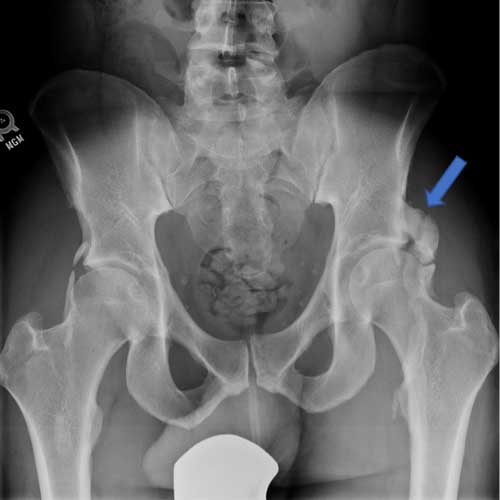
Pre-Operative Heterotopic Ossification
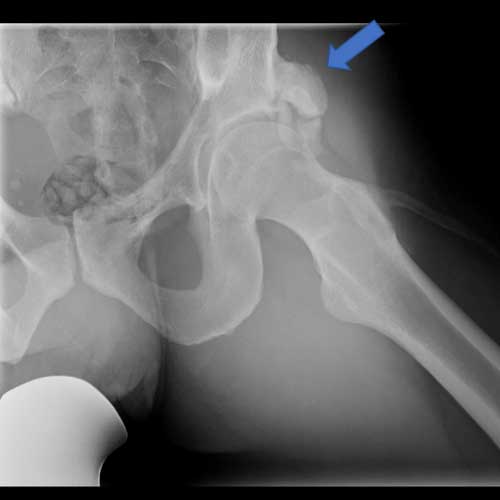
HO Heterotopic Ossification (Extra Bone)
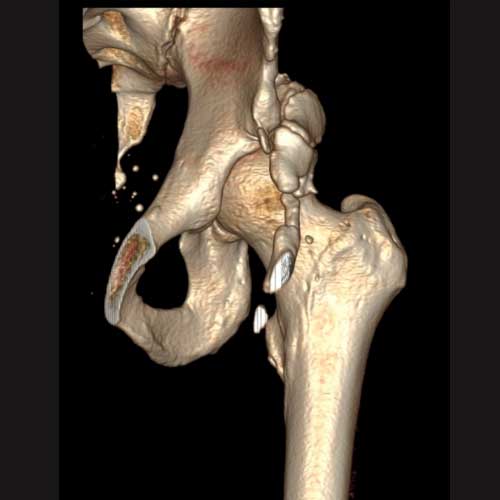
CT Scan of Heterotopic Ossification
How is heterotopic ossification classified?
The most commonly used method of HO classification divides the severity of abnormal bone growth and is measured by the space between opposing bone surfaces. HO classification is as follows:
- Grade A: No heterotopic ossification.
- Grade B: Presence of bone growth that is at least 1 cm in length and shows bone spurs on the pelvis or the femur. Shows 1 cm of distance between the bone surfaces.
- Grade C: Bone spurs greater than 1 cm between opposing bone surfaces, or apparent bone ankylosis (bone fusion).
What is excision of heterotopic ossification?
Excision is a surgical term used to describe the removal of something from the body. In the case of heterotopic ossification, the only effective treatment is excision, also called resection. Dr. Nwachukwu will often delay surgical excision for 5-6 months following the initial hip trauma and/or inciting surgery, allowing the bone growth to mature and for a distinct fibrous capsule to develop. This will help minimize the trauma to the surrounding soft tissues of the hip.
How is excision of heterotopic ossification done?
Dr. Nwachukwu may perform excision of heterotopic ossification arthroscopically if the extra bone pieces are small and accessible arthroscopically. For large pieces of bone Dr. Nwachukwu will perform an open excision of heterotopic bone using a minimally invasive approach. Excision of heterotopic bone is highly technical and specialized procedure should only be done by a hip expert, such as Dr. Nwachukwu who takes special care to avoid injuring the soft tissues surrounding the bony growth. During this procedure, specialized instruments are used to cut away and remove the bony growth. The area is then smoothed, and loose bodies are also removed.
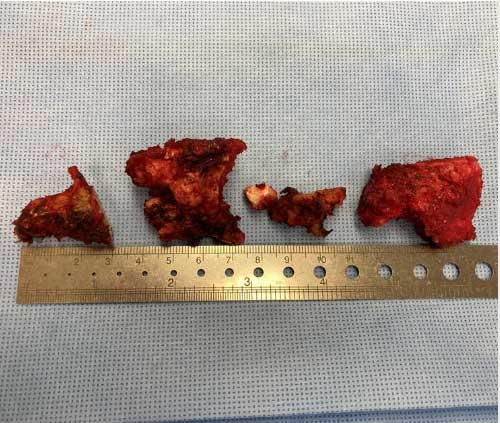
Excision of HO (Heterotopic Ossification)
What is the risk for developing additional HO?
Preventative treatment for further HO occurs during surgery, where Dr. Nwachukwu takes special care to leave the surrounding tissues undamaged. Patients who follow his post-surgical protocols are less likely to redevelop ossification but will need to be monitored carefully. Extreme cases of heterotopic ossification growth can be addressed individually and may include simple over the counter medications such as NSAIDs (non-steroidal anti-inflammatory drugs) or further treatments such as radiation to the heterotopic area.
How long is the recovery after excision of heterotopic ossification?
Recovery time is highly dependent upon the type of excision, patient health history and the severity of the ossification. In general, patients in New York can expect the following:
- Immobilization of the hip directly after surgery to avoid inflammation and the formation of a hematoma.
- NSAIDs will be prescribed to help alleviate pain and inflammation.
- After a week, rehabilitation will begin with a personalized post-surgical regimen.
- If the bones are fragile, weight bearing is limited for 3-6 weeks.
- Return to full activities and sport will be determined by the severity of the condition, treatment performed and the patient’s post-operative joint health.
How long is the recovery after subspine decompression?
Recovery times for patients will vary greatly and is affected by the severity of hip impingement, procedures performed and the overall general health of the patient. Typically, a patient can expect the following after subspine decompression:
- A focused, individualized rehabilitation program which begins immediately after surgery.
- Patients are typically on crutches for 3-4 weeks, depending on the procedure(s) performed.
- A brace may be placed, immediately following surgery to protect the hip during healing.
- Substantial improvement in hip range of motion and less pain.
- A return to regular work and sporting activities in 6-9 months.

Pre-Operative HO (Heterotopic Ossification)
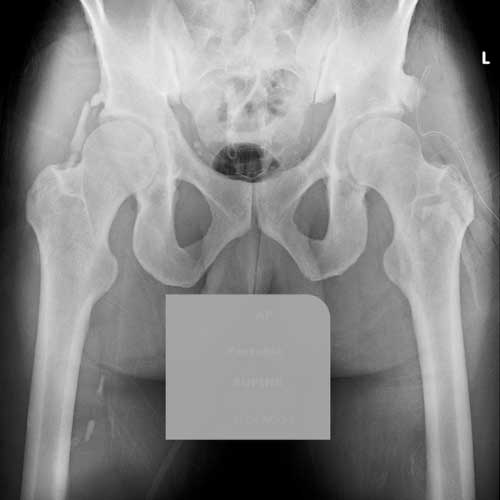
Post-Operative Excision of HO
For more information regarding excision of heterotopic ossification, bone spurs in the hip and other causes of hip pain, or to discuss treatment options available, please contact the office of Benedict Nwachukwu, MD, orthopedic hip surgeon serving Manhattan, New York City and surrounding New York boroughs.





